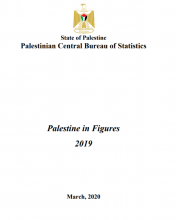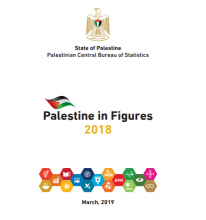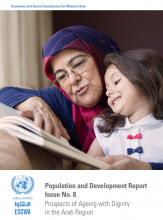-
Egypt in Figures - Population 2022
Central Agency for Public Mobilization and Statistics (CAPMAS), Egypt in Figures - Population 2022 2022"Egypt in Figures" is a booklet issued each year by the Central Agency for Public Mobilization and Statistics (CAPMAS). It contains the most important demographic, social and economic statistcs, as well as some statistical indicators about Egypt. Read More
Government publication -
The life of women and men in Lebanon: A statistical portrait
United Nations Development Programme (UNDP) and the Central Administration of Statistics (CAS) of Lebanon, The life of women and men in Lebanon: A statistical portrait 2021In response to the rising needs for more gender disaggregated data and indicators, and to better understand trends in gender equalities and inequalities over the past 15 years, CAS- with the support of UNDP- did a compilation of gender-disaggregated indicators based on...Read More
-
Egypt in Figures - Population 2021
Central Agency for Public Mobilization and Statistics (CAPMAS), Egypt in figures - Population 2021 2021"Egypt in Figures" is a booklet issued in March each year by the Central Agency for Public Mobilization and Statistics (CAPMAS). It contains the most important demographic, social and economic statistcs, as well as some statistical indicators about Egypt. Read More
Government publication -
Oman Statistical Yearbook 2020
Oman National Center for Statistics and Information, Oman Statistical Yearbook 2020 2020This is the forty eighth issue of the Statistical Year Book for the year 2020. The book is issued annually by National Center for Statistics and Information in view of the increasing importance of statistical data, alongside gradual transformation of the international...Read More
-
Palestine in Figures 2019
Palestinian Central Bureau of Statistics, Palestine in Figures 2019 2019This document is prepared in accordance with the standard procedures stated in the Code of Practice for Palestine Official Statistics 2006. Read More
-
Palestine in Figures 2018
Palestinian Central Bureau of Statistics, Palestine in Figures 2018 2018This document is prepared in accordance with the standard procedures stated in the Code of Practice for Palestine Official Statistics 2006. Read More
-
Egypt Statistical Yearbook 2020 - Population
Central Agency for Public Mobilization and Statistics, Egypt Statistical Yearbook 2020 - Population 2020The Egyptian Central Agency for Public Mobilization and Statistics (CAPMAS) has issued its statistical yearbook “Egypt in Figures” for the year 2020. This annual publication is a collection of the latest demographic, social and economic data and information produced by...Read More
Report -
Statistical Yearbook 2019 - Population
Central Agency for Public Mobilization and Statistics, Statistical Yearbook 2019 - Population 2019Conducting official censuses started in Egypt in the year 1882 in which population number was 6.7 million people. The decennial censuses were applied since 1897 census till 1960 census. In 1966, the first Population and Housing Census based on sampling, was conducted....Read More
Government publication -
The Arab Cities Resilience Report
United Nations Development Programme, The Arab Cities Resilience Report 2018This Report is designed to inform and provoke: to inform about concepts, their limitations, and how they are viewed in the Arab region; and to provoke new ideas and thinking for both discussion and resilience interventions in Arab cities. This Report appears at a...Read More
Report -
Population and Development Report Issue No. 8: Prospects of Ageing with Dignity in the Arab Region
Economic and Social Commission for Western Asia (ESCWA), Population and Development Report Issue No. 8: Prospects of Ageing with Dignity in the Arab Region 2018The number and share of older persons in the Arab region are steadily growing and will increase substantially in the following decades. The advent of this aging transition, which most Arab countries will start experiencing before 2030, has important economic and social...Read More
Report









